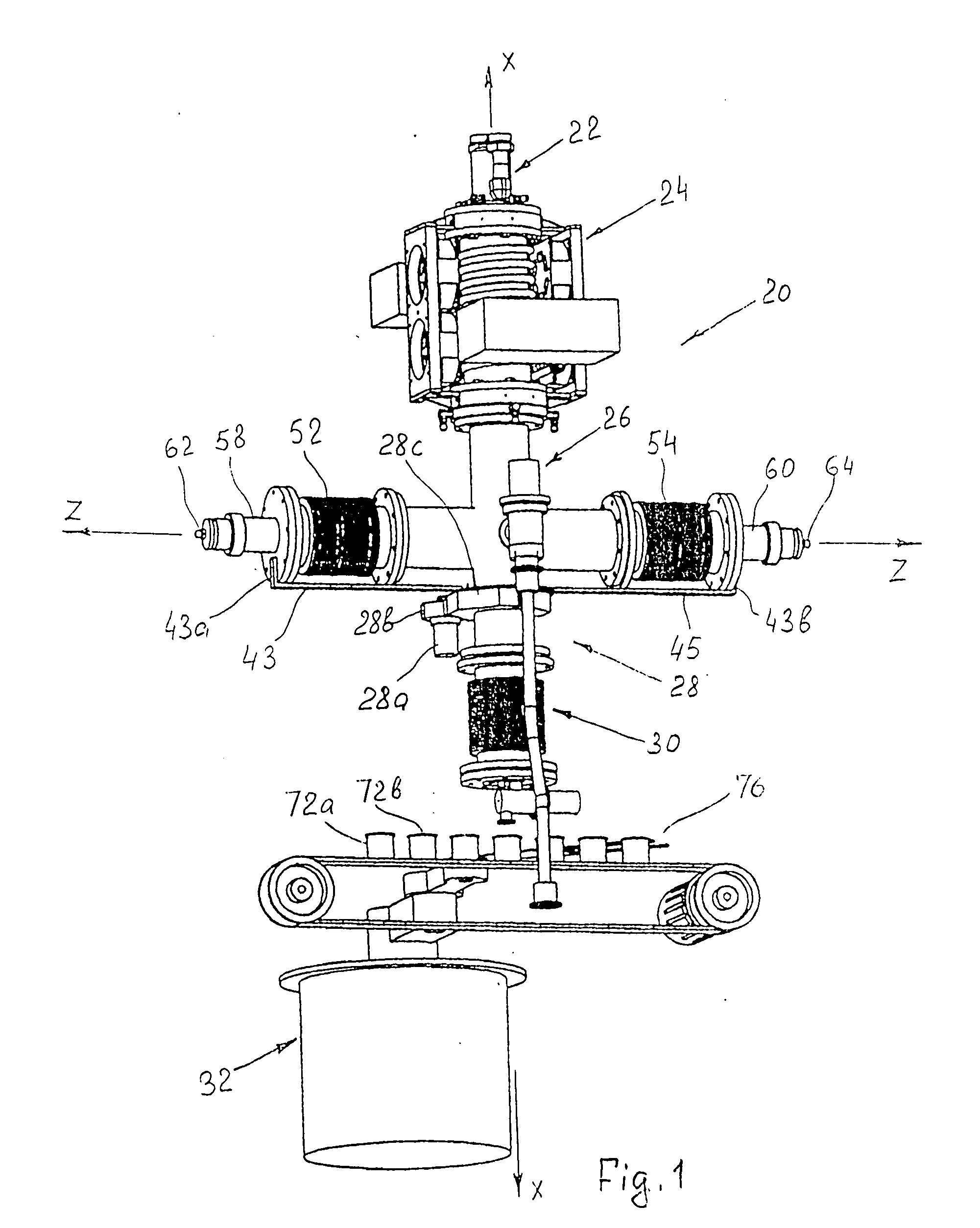Method and apparatus for manufacture of nanoparticles
a nanoparticle and nanotechnology, applied in the field of special materials, can solve the problems of significant loss of nanoparticles during the evacuation from the reactor, low efficiency, and low process efficiency, and achieve the effect of high production efficiency and high production efficiency
- Summary
- Abstract
- Description
- Claims
- Application Information
AI Technical Summary
Benefits of technology
Problems solved by technology
Method used
Image
Examples
Embodiment Construction
[0040]FIG. 1 is a general three-dimensional view of the apparatus of the invention for manufacturing nanoparticles. The apparatus as a whole is designated by reference numeral 20 and consists of the following main units sequentially arranged in the direction of propagation of the particles: a DC plasma torch initiator 22 into which components of the working mixture (nanoparticle precursor) are supplied; an RF plasma reactor 24, where the plasma chemical reactions for the initiation of the nanoparticle formation from a precursor occur; a Laval nozzle section (only a housing 26 of this section is shown in FIG. 1) for fast quenching and finishing the nanoparticle synthesis at well defined temperature (this process is also known as thermalization); a nanoparicle shielding and ntrapmnt unit 28, which is associated with the outlet end of the Laval nozzle (only rotary reciprocation drive motor 28a with the drive gear 28b and the protective casing 28c of the gear wheel are shown in FIG. 1);...
PUM
| Property | Measurement | Unit |
|---|---|---|
| frequencies | aaaaa | aaaaa |
| frequencies | aaaaa | aaaaa |
| angle | aaaaa | aaaaa |
Abstract
Description
Claims
Application Information
 Login to View More
Login to View More - R&D
- Intellectual Property
- Life Sciences
- Materials
- Tech Scout
- Unparalleled Data Quality
- Higher Quality Content
- 60% Fewer Hallucinations
Browse by: Latest US Patents, China's latest patents, Technical Efficacy Thesaurus, Application Domain, Technology Topic, Popular Technical Reports.
© 2025 PatSnap. All rights reserved.Legal|Privacy policy|Modern Slavery Act Transparency Statement|Sitemap|About US| Contact US: help@patsnap.com



